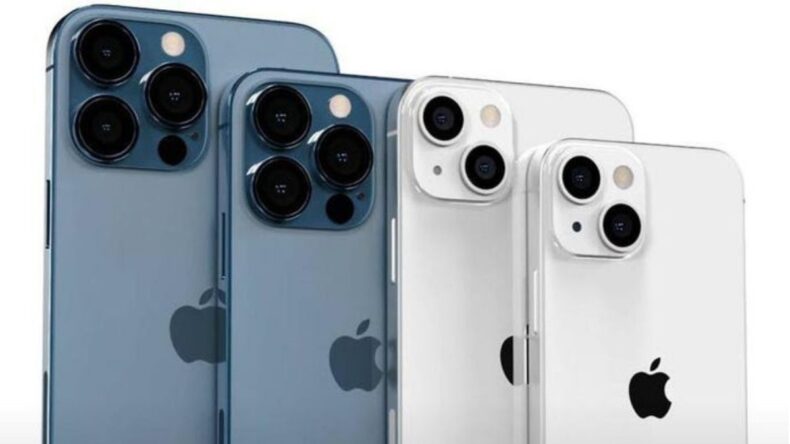Apple recently launched four models of iPhone 13 at Apple’s California Streaming event this Tuesday. And here is everything you need to know about the new product.
Apple hosted a keynote style event stating the fantastic features of the new iPhone 13, but if we compare it with previous models, there isn’t much change, to begin with.
If we start to count then, there are narrower notches, diagonally arranged cameras, and well, that’s it.
As users, we must appreciate that they have reduced the gap between Pro and regular models.
However, give or take, except a few millimetres, the shape and size of the new range of iPhone 13 are almost similar to that of iPhone 12.
Of course, one might argue that they are available in different colours, but apart from these artistic changes, differentiating between the two models might take some time because of the uncanny resemblance.
Now let’s see some of the features in detail. Notches were never a choice of the Android users, and however, they seem to be an endless choice of iPhone designers in the past few models.
The notches in the new iPhone 13, on the front, are a bit taller but slightly narrower. Now speaking of cameras, there are two rear cameras on the iPhone 13 and iPhone 13 mini, which are arranged diagonally.
However, the non-Pro models don’t have the optical telephoto camera because they can’t use their wide-angle camera, which is a primary function accessible to even Android users.
But with this being said, two pretty impressive camera features can’t be ignored: the Cinema mode and the Photographic styles.
These two features can be an excellent catch for financially restrained photographers and cinematographers; however, they aren’t of much use today as they don’t focus on and plan every angle and photograph.
While the new A15 Bionic SoC is at the heart of all four new iPhones in terms of sheer power, the two Pro models have an extra GPU core.
GPU power is used to differentiate between price tiers, just as it is with many modern Macs powered by Apple’s M1 SoC.
This should have an impact on video encoding and gaming performance. Apple only mentions two high-performance cores and four power-efficient cores for SoC frequencies and thermal characteristics.
Notably, there were few performance comparisons in this speech – save for the fact that Apple considers itself several generations ahead of the competition, which implies that last year’s goods are still excellent.
What else does the new iPhone have to offer? The battery life has been increased by up to two and a half hours, which is fantastic.
If you want a 120Hz refresh rate, you’ll have to choose one of the Pro versions, as this is the only thing that separates the families.
The Ceramic Shield front, IP68 rating, and MagSafe accessory compatibility appear to have been carried over from the previous year.
Then there’s iOS, the iCloud ecosystem, seamless interaction with Apple Watch, Macs, and AirPods, and Apple’s well-worn security and privacy arguments.
Software updates have been promised for several years, which is considerably more than any Android phone maker has achieved thus far.
All four phones will be beautifully constructed, with high-end materials and finishes. The iPhone displays are usually stunning, the speakers are excellent, and there’s nothing to complain about the call quality.
Now, finally, let’s come to a very important aspect of this review. The prices. The iPhone 13 Pro costs Rs. 1,19,900 for a 128GB model, Rs. 1,29,900 for a 256GB model, Rs. 1,49,900 for a 512GB model, and Rs. 1,69,900 for a 1TB model.
The iPhone 13 Pro Max costs Rs. 10,000 extra per tier, making the 1TB model the most costly iPhone ever at Rs. 1,79,900.
And yet, despite such high prices, the brand has still managed to make its way in people’s hearts because of the lure of the brand and its brand value, making its way to the wishlist of thousands of people this year.













